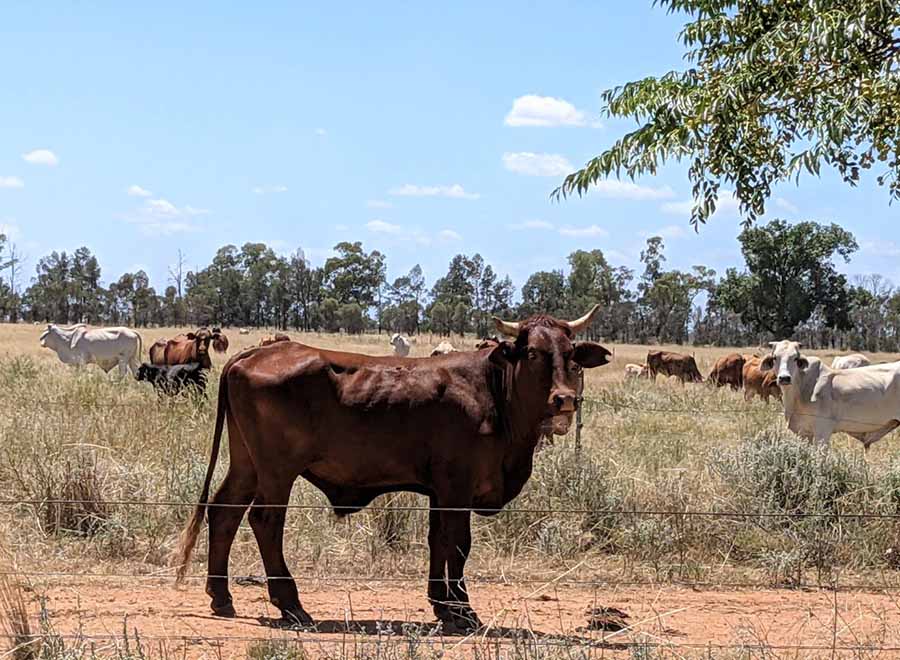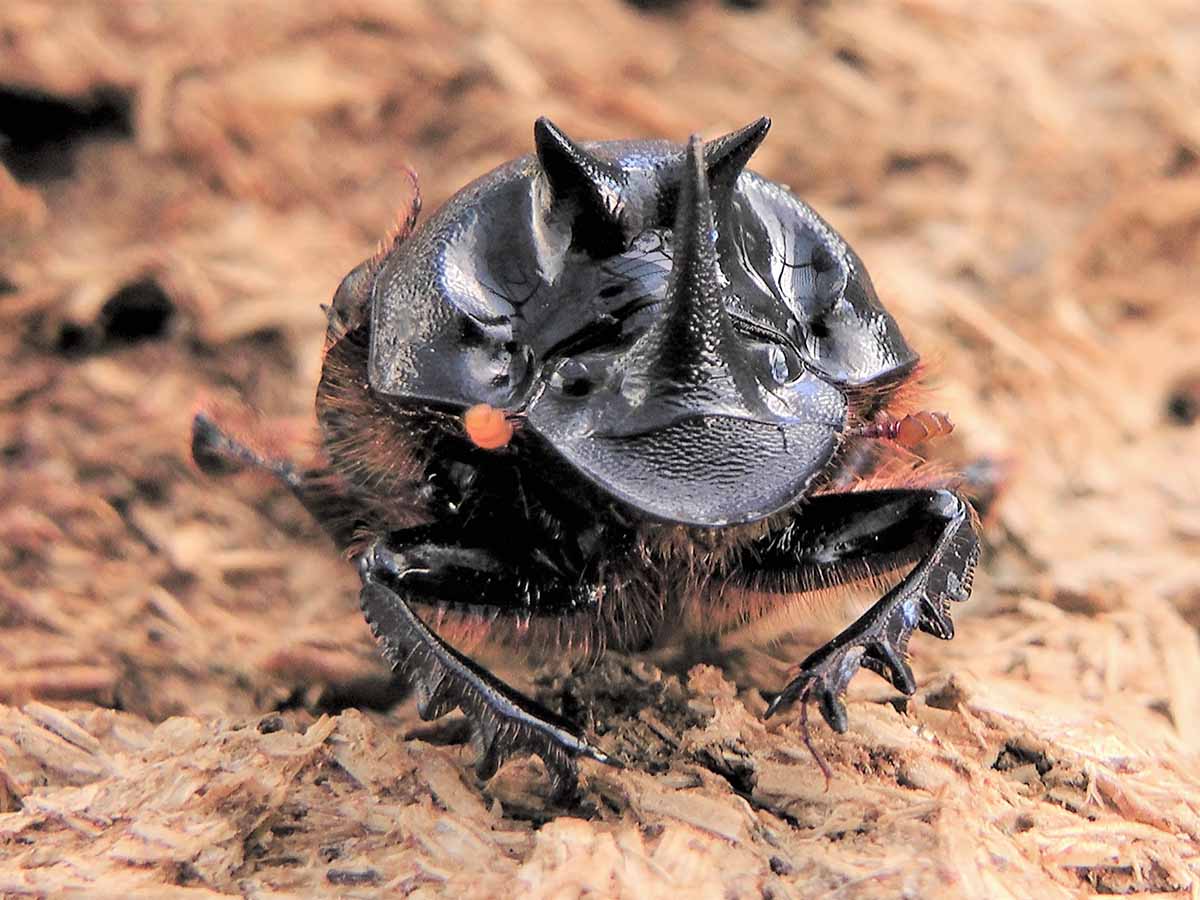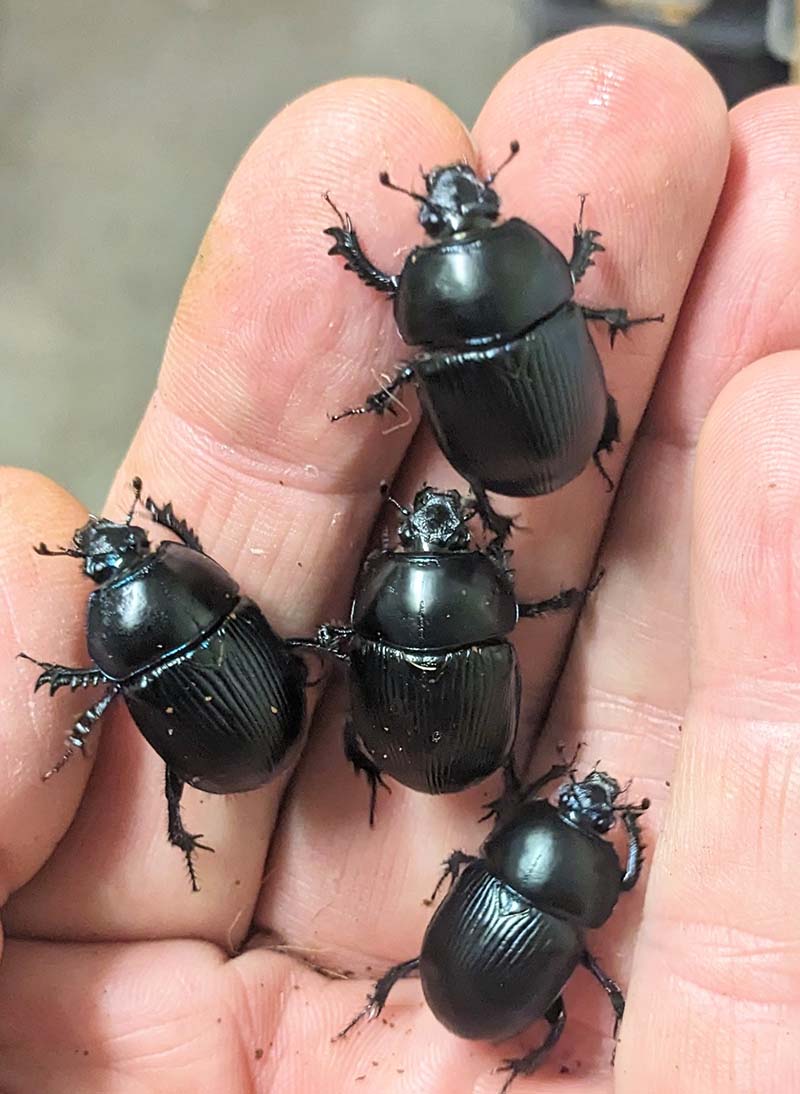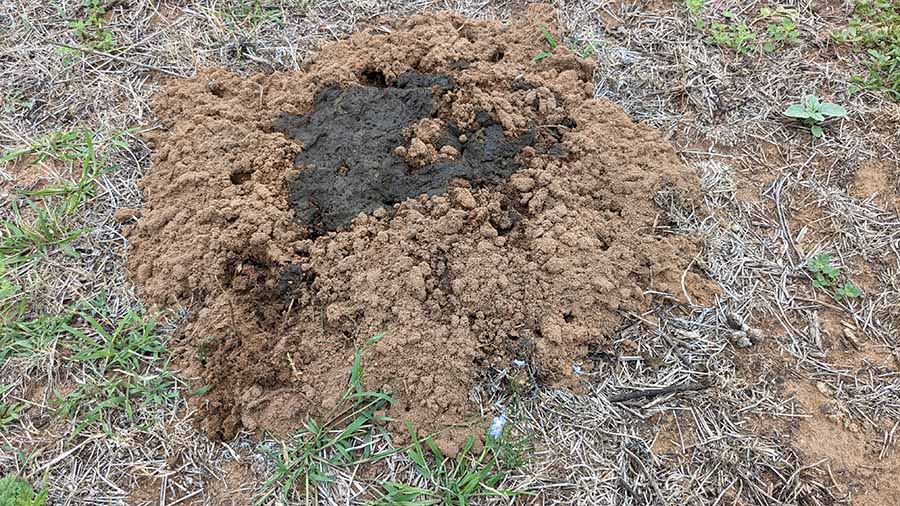Entomologists characterise three types of dung beetles in the world: dwellers, tunnellers and rollers. The focus in Australia was on introducing tunnellers. Despite the name, most dung beetles don't actually feed on solid dung; rather, they suck up the moisture, eating bacteria and fungi before digging a tunnel into the soil and taking dung for their larvae.
The tunnelling changes the bulk density of the soil; what was once compacted is now more porous.
By tunnelling up to a metre underground, the beetles aerate the soil, bringing buried nutrients to the surface and fertilising the deeper soil. The aeration of the soil also increases water absorption rates and reduces nutrient runoff during weather events. 'The tunnelling changes the bulk density of the soil; what was once compacted is now more porous,' Dr Barrow said.
An analysis of 24 studies across 14 countries was published in Proceedings of the Royal Society B: Biological Sciences in early 2024. The study found that the beetles can positively impact plant growth by up to 17%. The lead author was PhD candidate Daniel Anderson from the University of Western Australia. His team found that the improved plant growth was seen through thicker leaves rather than taller shoots, which allowed for greater photosynthetic capability. You can read the full scientific analysis here or this summary by the University of Western Australia here.
So what we find is that the dung beetles in good abundance can really suppress the fly population.
Beyond improving soil health, the tunnelling dung beetles also help improve livestock health by reducing the environment in which flies and nematodes grow. As the dung pats can be dehydrated and buried by the beetles within a day, the environment quickly becomes inhospitable to maggots. 'So what we find is that the dung beetles in good abundance can really suppress the fly population,' Dr Barrow said. By reducing the amount of manure on the surface, dung beetles are also able to disrupt the life cycle of gastrointestinal parasitic nematodes, which are re-ingested as third-stage larvae.

Even as Australian pastures have seen the benefits of dung beetles, Dr Barrow said there are still some climates and seasons that have yet to find a successful beetle to target specific issues. 'At the moment, it's due to bad luck, not bad planning, that the dung beetle species introduced to Australia haven't been effective in Queensland during late winter and early spring, just when buffalo flies start to breed,' he said. 'So we've got this gap in dung beetle activity in spring, so the buffalo flies can breed up and cause issues because there are no dung beetles.'
However, the hunt for the ideal new species is ongoing, including into parts of northern Africa, in hopes of finding a beetle or predatory insect that could help reduce buffalo flies for Queensland producers.







